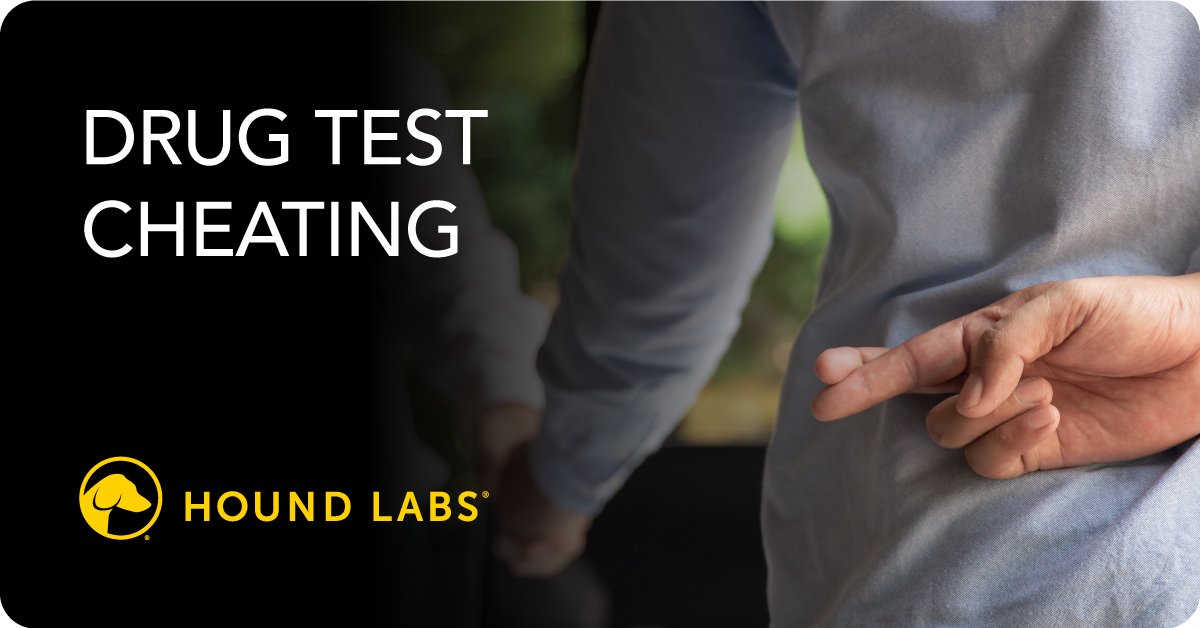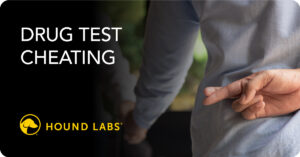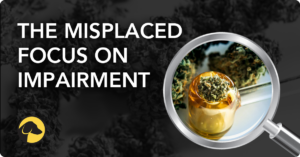
Drug Test Cheating: Which Tests Present the Highest Risk
It only takes a quick internet search to find numerous gimmicks claiming to help people beat a drug test. And, it seems people are taking the advice literally. Workplace drug test cheating has reached peak levels, hitting the highest rate in more than 30 years, according to Quest Diagnostics, one of the nation’s leading drug testing laboratories. Drug test cheating is such a problem that many states have enacted legislation to make cheating a drug test a criminal offense. While some test types present a higher risk for cheating, breath is not one of them.
Breath, hair, and oral fluid drug test samples are typically collected in an observed setting, making it far more difficult to cheat by dilution, adulteration, or substitution methods. But they are by no means equal when it comes to the risk they present for drug test cheating. Here, we examine different sample types and discuss how to detect potential cheating.
HOW SERIOUS IS DRUG TEST CHEATING
People attempt to cheat drug tests for a variety of reasons – to gain employment, keep a job, avoid jail time, retain custody of a child, and many others. Statistics vary on how many people attempt to cheat drug tests because it’s extremely difficult to account for those who successfully pull it off. The phenomenon of drug test cheating is pervasive enough to support a veritable subculture of consumer products with claims of helping people subvert drug tests.
The most common ways people try to cheat drug tests are:
- Dilution – when someone tries to drink more liquids to lower the concentration of a drug in their system
- Adulteration – when someone attempts to tamper with a drug test sample to alter the result
- Substitution – when someone replaces their drug testing specimen with another “clean” sample
Studies show nearly a third of drug users have used detoxification beverages to try to cheat a test, and about one in five have substituted or diluted urine for a drug test. However, it’s widely acknowledged throughout the drug testing industry that observed collections performed by trained professionals greatly mitigate the risk of drug test cheating.
In response to the prevalence of drug test cheating and to account for the proliferation of new laws legalizing substances like marijuana and some psychedelics, many states have enacted laws that penalize drug test cheating through fines, jail time, or both. In Florida, Michigan, North Carolina, Oregon, Pennsylvania, South Carolina, Texas, and Virginia, it’s a misdemeanor charge. For first-time offenders, the punishment can be anywhere from six months to three years in prison. Most states also assess fines of $1,000 or more. In other situations, cheating a drug test can result in a felony charge.
HIGHEST RISK – URINE DRUG TESTING
Urine testing is the most common drug test type and, given the nature of its typically private collection process, it’s also one of the easiest test types to cheat. Since urine collections are usually done in private without the collector observing the donor as they provide a sample, it can be difficult to tell if a donor has tampered with a sample. Roughly 31,000 drug screens out of 5.5 million showed signs of tampering, with synthetic urine samples increasing sixfold in 2023, reported Quest in its annual Drug Testing Index™ Analysis.
As mentioned previously, there are three primary methods for cheating a drug test; urine tests are susceptible to all three. Individuals have been known to consume water or other liquids at such a volume that their samples do not contain enough drug metabolites to render a positive result above the cutoff level. There are also a variety of adulteration and substitution products geared toward urine testing. One of the more bizarre stories of drug test cheating we’ve uncovered involved people heating urine in a microwave, presumably to bring a fake sample to body temperature and minimize the chance of being caught cheating.
MODERATE RISK – HAIR DRUG TESTING
Hair testing delivers the longest detection window of these specimen types, and it’s not fully immune from methods and opportunities to cheat or negatively impact test results. The simplest maneuver from individuals attempting to cheat this method is removing all hair from typical collection locations like the head, neck, arms, and legs; but this effort may only delay the inevitable if another test is requested.
NEUTRAL – ORAL FLUID DRUG TESTING
Although not as easy to cheat since it is an observed collection, there are still a few ways an oral fluid (saliva) test may be adulterated or contaminated. The most popular method is rinsing with mouthwash immediately before providing a sample. Some companies also market detoxification drinks that allegedly help donors beat an oral fluid test. Consuming mints, chewing gum, and eating candy with citric acid are also suggestions for masking recent use that would otherwise render a positive result. However, collectors are trained to make a donor wait for 10 minutes to help thwart any would-be cheating attempts.
LOWER RISK – BREATH DRUG TESTING
Like hair and oral fluid tests, cannabis breath test collections are observed, with the entire process taking place in full visibility of the trained collector. These collectors also require donors to wait 10 minutes before starting a collection. All these steps help to ensure the integrity of the collection and validity of the sample from beginning to end. Breath tests have several other qualities that make cheating extremely difficult.
In the case of the HOUND® CANNABIS BREATHALYZER, years of scientific research went into developing a standardized and automated breath collection that optimizes the test’s validity. Single-use, tamper-evident cartridges yield no-mess collections that greatly reduce any chance for sample manipulation. And clinical studies show Liquid Chromatography Mass Spectrometry (LC-MS) analysis of the Hound® solution is specific enough to avoid cross-reactivity, thereby reducing the chance of false-positives.
Sample contamination is also highly unlikely with breath testing. The HOUND® CANNABIS BREATHALYZER captures molecules from the lungs, where THC remains present for only a few hours after use. In cannabis testing, breath is the only sample type that provides a confirmed detection window of 2-3 hours after use.
Some have suggested that vomiting, exercising, showering, or hyperventilating can help thwart a breath test. Not only are some of these suggestions dangerous, but they are also ineffective against the Hound® solution.
LOWEST RISK – BLOOD DRUG TESTING
Due to the high cost and invasive nature of blood tests, these drug tests are used much less frequently than other testing methods. Cheating on a blood test, however, is very difficult. Like breath, oral fluid, and hair, collections are observed with the donor in view of the trained collector throughout the entire process.
Finally, although some products on the internet claim to be able to detoxify a person’s system before a blood drug test, these accounts are largely unsubstantiated and potentially dangerous.
FOOLPROOF RESULTS
According to the 2022 U.S. Cannabis Report from New Frontier Data, cannabis use has increased dramatically in the past decade. There were roughly 28 million cannabis users in 2012. That increased to 47 million in 2020 and to 52 million in 2022. This increased use is leading to significant expenses for companies, ranging from safety and risk mitigation to recruiting and retention. Using a test like a cannabis breath test to reduce cheating can also help deter workday marijuana use and improve safety. Moreover, using a test that reliably reports recent use can support hiring and retention efforts by demonstrating an employer’s focus on prioritizing workplace safety, not on penalizing employees for off-duty cannabis use.
If you’re ready to implement a drug testing solution to enhance safety and improve retention while reducing the likelihood of cheating, please contact our experienced team today to learn more about cannabis breath testing.

May 16, 2024
By LOUISA ASHFORD
Director of Marketing
Share











